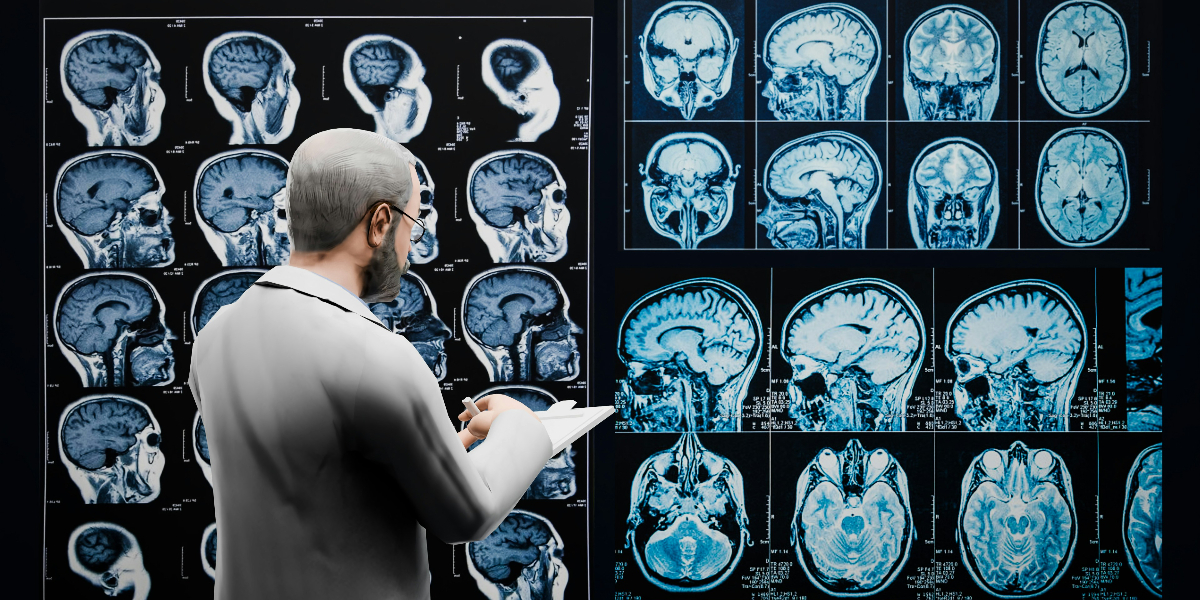Nicole Rust is a brain researcher and professor of psychology at the University of Pennsylvania. She is also a contributing editor at The Transmitter, a leading brain research news magazine. In 2021, she received the Troland Research Award from the National Academy of Sciences.
What’s the big idea?
Cures for brain disorders have remained elusive because researchers have been trying to find solutions the wrong way. Just as it took Copernicus proving that the Sun is at the center of our solar system before we could understand planetary motion, neuroscience has needed a new framework for understanding how brains function, and the mechanisms by which they become disordered. The latest neuroscience findings are poised to revolutionize brain disorder research and treatment.
Below, Nicole shares five key insights from her new book, Elusive Cures: Why Neuroscience Hasn’t Solved Brain Disorders―and How We Can Change That. Listen to the audio version—read by Nicole herself—below, or in the Next Big Idea App.

1. Our cures are often old and not well understood.
Many of the therapies we have today to treat brain and mental disorders are derived from therapies discovered long ago (before we knew much about the brain at all), and we still don’t know how most of them work.
The first antidepressant is a great example. Its role in helping with mood was discovered during clinical trials for a drug to treat the lung-infecting bacteria tuberculosis. Patients who received the drug were joyous and dancing around, so researchers realized it had another purpose. Today, there are many antidepressant drugs, but we don’t really know how they work when they do. We understand some things about them, such as how they impact neurotransmitters, but how does changing those chemicals affect mood? And why do antidepressants take weeks to kick in? Those are things we still don’t understand.
Another drug that was created before we knew much about the brain is the opioid painkiller OxyContin, which was derived from the ancient opium remedy used by Mesopotamians as early as 3400 BCE. Yet another example is the drug Ritalin, used to treat ADHD, which was created in the 1940s by a chemist who decided to try it on himself and his wife, who liked it because it made her a better tennis player. In honor of his wife, whose name was Rita, he named it Ritalin. There are many examples of brain drugs like this.
2. Brain disorders can’t be understood like a broken chain of dominoes.
In the 1990s, researchers began to think about the brain as a big chain of causes that lead to effects, where brain disorders follow from broken links in the chain. That chain started with our genes, which then created brain cells, those led to other links like brain activity, and it ended in the things our brains do—like seeing, remembering, thinking, and moving. The idea was that a broken link in the chain could lead to a brain disorder, and the goal was to identify those broken links so we could target them for a fix. In the case of a mutated gene, it might be a drug. In the case of a brain area with abnormal activity, therapy might involve a form of brain stimulation.
“Causes don’t just lead to effects; they also loop back again as causes.”
The broken-link idea did work for some disorders. The problem is that for many other disorders, it did not. For instance, the hope of the 1990s was that we could develop blood tests and brain scans to diagnose psychiatric conditions, but we still don’t have those despite decades of trying. We still don’t understand what’s happening in the brain when someone goes through a depressive episode or a bout of psychosis. But we are beginning to realize why.
What’s missing from the links-in-a-chain description is that the brain is full of feedback loops. Causes don’t just lead to effects; they also loop back again as causes. This makes the brain a lot more like the weather than a domino chain, and a brain disorder, such as a seizure, something like a hurricane. We should expect that, like the weather, the brain will be difficult to influence in the way we want to—we cannot dissipate a hurricane. The challenge we face is formidable, but by facing it head-on, I’m optimistic that we will solve it.
3. Our brain’s adaptability makes it both powerful and fragile.
Our brains are terrific at adapting. Put you in a new country with a new language, and you’ll learn it—that’s a slow adaptation. Or see a tiger and your brain kicks into a different mode that helps you run—that’s fast adaptation.
One principle of adaptive systems is that adaptability often comes at the price of fragility. These systems have many dependencies. In an ecosystem, a big food web can collapse if something happens to one species because all the species are interdependent and adapt to one another. In the case of our fight-or-flight system, it can burn out through overuse because of chronic stress, leading to things like perturbations in day-night rhythms and insomnia. The fact that chronic stress leads to insomnia, which leads to other health problems, is an example of a dependency in a complex system where adaptation makes it fragile.
Another, of many, examples is our immune system. It exists to adapt to foreign substances in our body to protect us from disease. When the immune system becomes uncalibrated, it can lead to a neuroimmune disorder that attacks the body’s own tissues, such as multiple sclerosis. Once you start thinking about the brain this way—fragility at the price of adaptability—you can see that it applies to nearly every brain and mental disorder.
4. The stories behind new brain disorder therapies are epic.
The drug suvorexant, approved in 2024 to treat insomnia, originated from the discovery of a new chemical brain cells use to communicate, called orexin, and its role in regulating sleep. At the time of its discovery, researchers already knew that there were chemicals in our brains that help trigger sleep, like melatonin. They discovered that orexin works in the opposite way: it keeps us awake.
The discovery began by studying a genetically inherited form of narcolepsy in dogs. Like humans with narcolepsy, the dogs would spontaneously fall asleep during the day. The researchers worked out that a genetic mutation causing problems with orexin was why those dogs had narcolepsy. They then worked out that humans with narcolepsy also have problems with orexin, but not due to genetics. In humans, the brain cells that produce orexin are degenerated, probably due to a neuroimmune attack. That discovery took decades of research.
Knowing that orexin keeps us awake, the pharmaceutical industry spent a decade developing an insomnia drug to block receptors for orexin. This included a screen of over two million chemicals to find a good one. They then modified it chemically to make it even better. Finally, the drug went through multiple stages of clinical trials to ensure it was effective and safe. Only then was suvorexant approved. The development of the drug suvorexant was epic.
5. We can be optimistic about research on brain and mental disorders.
I was motivated to write Elusive Cures because, despite being a brain researcher for decades, I couldn’t see the throughline between what was happening in brain research and the end-goal of treating brain disorders. I also couldn’t find descriptions of that throughline written down anywhere in a way that left me hopeful. It was clear from the outset that something needed to change in terms of how brain researchers (including myself) were going about things if we wanted to understand the brain in a way that helped treat mental disorders. But what?
“There is good reason to think those loops are key to what we’ve been missing.”
While writing the book, I realized that the changes that need to happen are already happening. That’s the source of my optimism. We’ve been oversimplifying the brain as something like a domino chain of causes that lead to effects, assuming that the causes of brain disorders are broken links in a chain. For many disorders—from Alzheimer’s to depression—that hasn’t worked. We’ve known all along that the brain is full of feedback loops, but it’s only due to recent breakthroughs that we can now measure and model the brain in this way. In a brain with those loops, the causes of brain disorders can manifest in ways that are different from broken dominoes. There is good reason to think those loops are key to what we’ve been missing.
Shifts like these can unlock progress. Take the example of planetary motion. In ancient Greece, Ptolemy proposed a model in which the planets and the Sun travel around the Earth. While accurate at predicting where the planets would be, it had numerous hacks to account for things like the planets traversing across the sky in one direction and then suddenly changing course. In the mid-1550s, Copernicus came along, wondering if there could be a more reasonable arrangement. He proposed that the planets, including Earth, travel around the Sun. That shift in thinking about what planetary motion “might be like” was the key to kicking off progress. It inspired Kepler to create a new model, which in turn helped inspire Newton to propose gravity as the force that makes planets move. Today, we still use Newton’s physics to explain gravity for most purposes.
This shift away from thinking about the brain as a chain of links to thinking about it as a system full of feedback loops will be Copernican, kicking off progress that will be meaningful for reaching the end goal of treatments and cures. I believe we are entering a new era.
Enjoy our full library of Book Bites—read by the authors!—in the Next Big Idea App:






























